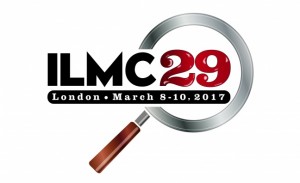Assomusica takes part at IPA during ILMC29
- Written by
- Published in NIMPE
Vincenzo Spera from Assomusica explained that their initiatives are designed to encourage a continuation of discussion following on from the meeting. As there had been little communication since the last meeting (except from within IQ Magazine), and Music Moves Europe has not gone in the direction desired as yet, Assomusica has produced two initiatives it hopes will keep the conversation moving forward between associations and relevant institutions over the next twelve months.
ELMA (European Live Music Association), initially formed alongside BDV from Germany, MESO from Greece, Root Music from England, Common Creation from Czeck Republic, aims to give a voice to the live music sector on local, regional, national and European levels by and connecting experts and stakeholders from European and National music associations, private organisations (venue owners, festival organizer, music exhibitions, production companies) and educational organisations and public bodies such as export offices, music councils, music centres, music academies, conservatories and music camps.
The objectives of ELMA are to build up the number of partnerships, strengthening local capacities in a truly European framework, support the set up of new industry policies and relevant actions toward European institutions for the live sector which are currently underrepresented in the EU programme, and to exchange knowledge, services and encourage collaboration of every kind. A special focus in ELMA action concerns less represented regions of Europe like Eastern and Mediterranean countries; often high potential as far as art production and artists but with a lesser access to more structured markets and often not as represented at an European institutional level as the usual few northern and western European countries.
The goals of ELMA are to identify common sector problems and needs, organise economies of scale through new partnerships, support a young talent artist circulation model and provide data and innovative models of sustainable development to the EU.
The short term objectives of ELMA (3-12 months from the meeting) include gathering a think tank of live music producers and professionals, identify the current market needs across different European countries, measuring live music business across Europe through mapping activities implemented by EMLA partners, and to generate live music circuits for grass roots talents and artists mobility.
The mid-long term objectives of ELMA (12-36 months onward) are to foster cross border mobility, exchanges and business opportunities amongst stakeholders, to provide a networking tool in European countries currently lacking trade union or association support, and to encourage the set up of these kinds of institutions. ELMA also wants to support the development of a European music sup-program dedicated to live music, and to influence through proper lobbying, European legislative policies in the live music sector to be adopted at EU and national level.
The second initiative Assomusica presented at the summit was NIMPE (Network for internationalisation of music producers in Europe), a project co-funded by Creative Europe in response to the difficulties encountered by smaller music production companies when exporting and internationalising their projects or activities.
NIMPE’s strategic objectives include providing music producers with information and practical tools, to encourage access of audiences to music from different countries, to create an international network of producers, technicians and stakeholders, to strengthen the business dimension of music producer’s enterprises and to create and test a pilot Factory dedicated to music operators and their artists.
Conclusions
The consensus at the end of the summit was that there was a clear need for associations to work together in tackling the issues discussed across the day. There were calls for collaboration with those producing similar initiatives in their respective territories.
The question was asked about the possibility of more regular meetings, and what the format for these meetings could be. As this year’s revised format around presentations was received positively, the call for smaller-sized “focus group” meetings between associations to discuss mutual issues arose.
Attendees remarked that the softer framework of a ‘working group’ enabled the meetings to tackle the issues at hand effectively. One point which was appreciated across the board, was the possibility of inviting an expert in a field to be discussed at the meeting, so they can give their professional opinions to the group and allow more of an exchange of knowledge.
Attendees also called for more time to prepare topics for the meeting, which would allow them to get more out of the session. Other topics the attendees would like to see discussed at future meetings included lobbying, data, as well as further talks about PROs. There was a lot of interest in the ISNI, which the IMMF presented, and there was agreement that this topic needed further discussion.
Related items
Latest from
- Wind Music Awards 2017: Fiorella Mannoia awarded by Vincenzo Spera on the stage in Arena di Verona
- VINCENZO SPERA confirmed as Assomusica PRESIDENT at the 29th assembly
- Spotify lancia la piattaforma per condividere dati con gli artisti
- Torna, insieme al Midem, il Midemlab. I consigli degli esperti
- Ansa.it: Morto J. Cotton, leggenda dell'armonica blues













